| 1 | Argentina’s main pitviper |
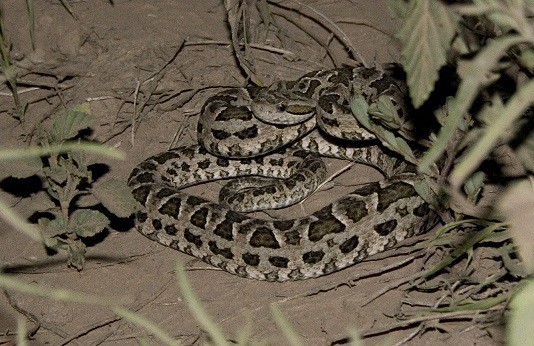
In Argentina, there’s one venomous snake which everyone knows. They know to back off immediately when they see its glowing trapezoid patterns, and they know that if you’re wearing thick leather boots and trousers, you have a far higher chance of survival. This snake is the painted lancehead, AKA Bothrops diporus.
This snake is locally called “yarará chica” and belongs to the Bothrops pitviper family, also containing crossed pitvipers and jararacas. They’re one of the smaller members, at 60-70cm in males, and up to 110cm in females. The painted lancehead lives in southern Brazil, Paraguay and Uruguay, but their claim to fame is occupying a huge swathe of Argentina. In northeast Argentina, they overwhelmingly cause the highest amount of snakebites.
Painted lanceheads are a ground-dwelling species which climbs trees only rarely, and has a moderately thick body with a bulky, triangular head. The venom targets muscle tissue, and can leave a victim’s muscle tissue permanently weakened and incapable of regenerating properly. It’s extremely rare for a painted lancehead to exceed 1.2 metres.
| 2 | Appears in most habitats |
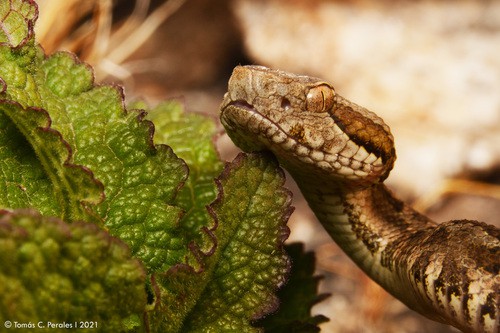
The painted lancehead covers 60% of Argentina, including approximately 1,595,687 square kilometres of territory. The furthest south a painted lancehead has ever been recorded is La Pampa, Neuquén province, in central Argentina. Beyond that, the forces of Antarctica become too overwhelming to withstand.
Painted lanceheads are flexible in their habitats. They’re seen on paths where people relax on picnic benches, but Bothrops diporus is particularly common in marshes and semitropical deciduous forest. They’re also found in chaco, which covers northwestern Argentina, essentially Argentina’s version of a dry savannah, with wispy grass intermingled with thick-trunked trees. Pampa is another habitat – fertile, sweeping grasslands in eastern Argentina.
Painted lanceheads have two peaks in their activity per year: in autumn from March to May, and in late summer from January to February. April was their absolute most active month, according to a 2008 study. Compared to crossed pitvipers, they lay relatively few eggs, just 6 to 14 versus up to 40.
| 3 | More reasons to run fast |
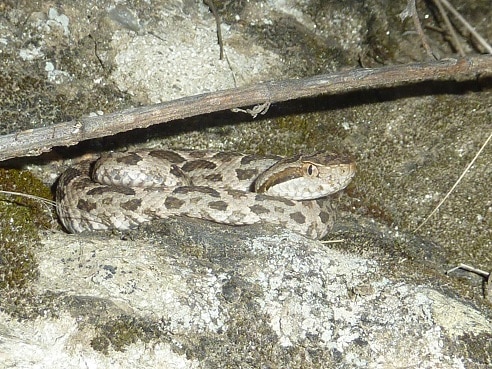
The South American pitvipers share a large base of toxins, but weird intricacies and unique toxins evolve in each species. In 1998, the painted lancehead was compared to other Bothrops members directly. The study, conducted on mice, found that painted lancehead venom had less edema-forming (swelling) activity than the jararaca and jararacussu. However, painted lancehead venom was the most haemorrhagic of all, defeating jararaca, jararacussu and crossed pitviper (B. alternatus) venom. It also caused visible necrosis in the muscle tissue of mice.
In humans, a painted lancehead bite causes a laundry list of horrors: intense pain, rapid swelling, inflammation, haemorrhage, muscle destruction, and death via kidney failure in the most extreme cases. The one saviour is a lack of neurotoxic powers like paralysis and twitching eyelids – these are rare for Bothrops pitvipers (they’re more the speciality of coral snakes). Painted lanceheads are also simple to treat with antivenom, which every hospital in northeast Argentina stocks.
Argentina manufactures its own antivenom in the Instituto Nacional de Producción de Biológicos, located in Buenos Aires. This uses immune system antibodies generated from painted lancehead and Bothrops alternatus injections, and a 2015 study found high effectiveness against the lethal qualities of painted lanceheads. Doctors can save you with ease, but one part is down to you – actually reaching the hospital.
| 4 | ID: look for the white glow |
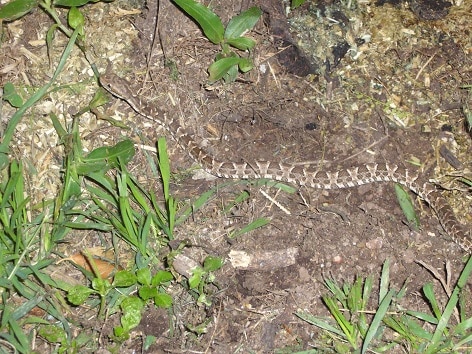
Bothrops diporus is a fairly ordinary-looking pitviper. They’re not distinctive like Bothrops bilineatus, which is bright green and therefore instantly separable from the rest. Painted lancehead sounds flashy and full of fabulous colour, but this Argentina species is actually fairly dull.
The main ID sign lies with the patterns. From a distance, they resemble basic brown trapezoids, but up close, the outer edges glow with a mystical white. This is the best ID sign, as painted lanceheads are variable in their patterns elsewhere. In some, the trapezoids are broken, and in some they’re not trapezoids at all, but diamonds or even hourglass shapes.
Painted lanceheads have a grey to beige body, while their belly is far paler, not quite white but a pale, dried out cream colour. They have a moderate length tail, which makes up 10-18% of their overall body length, compared to 9-16% in the crossed pitviper. They also have a ridge of keeled (sharp) scales down their spine, which is rough to stroke your finger on. Their pupils are vertical, with bright yellow irises.
| 5 | BdipTX-I: just one deadly ingredient |
In 2017, scientists identified one of the specific toxins behind the swelling: BdipTX-I, part of the phospholipase A2 family. This inflated a mouse paw in doses of 5ug and 20ug. The swelling began after 30 minutes, peaked in one hour, and began to subside after 24 hours. This is just one ingredient in the soup that is painted lancehead venom.
Next up was analysing muscle toxicity (myotoxicity), as measured by creatine kinase, a biomarker produced when muscle tissue is broken down. Bothrops diporus venom caused a creatine kinase surge of 284%, but BdipTX-I was also strong at 127%. The muscle was deliberately targeted – a few snakes mainly target upper skin layers, like the monocled cobra of Thailand. This unique toxin is strongly myotoxic, yet there are clearly other myotoxins as well.
BdipTX-I had little affect on kidney function, and kidney failure is the main cause of death with this species, meaning that other, hidden toxins are responsible. Though BdipTX-I was its own offshoot, it had structural similarities to toxins in other Bothrops pitvipers – BthTX-I in the jararacussu, and MjTX-II in Bothrops moojeni.
| 6 | Diet: relatively flexible |
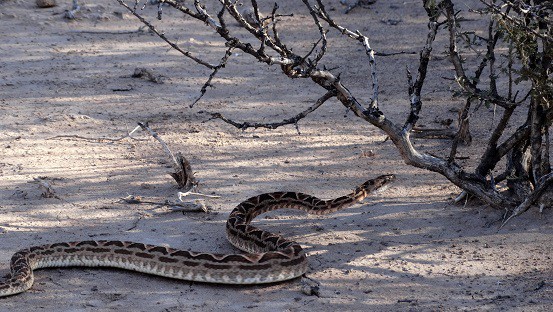
The crossed pitviper (Bothrops alternatus) is another species of northeast Argentina, which gets nearly 100% of their calories from mammals. Their cousin the painted lancehead is far more flexible, freely tossing in reptiles and frogs too. A study from Sante Fe tested 104 painted lanceheads, and found an overall diet of 50% mammals. They scooped out a big mush of mammal remains and were unable to identify any actual species. But they identified some other local creatures as prey:
Cercosaura schreibersi – AKA Schreibers’s many-fingered teiid. A very common lizard in Argentina and neighbouring Uruguay.
Erythrolamprus poecilogyrus – AKA the yellow-bellied liophis, a 45-70cm snake which is a strong swimmer and itself has viper-esque patterns.
Rhinella schneideri – AKA the Cururu toad. Has a gland in each hind leg which secrets a milky white bufotoxin, hinting that painted lanceheads have natural resistance.
Another study tested both the crossed pitviper and painted lancehead in northeast Argentina, where they often overlap. B. alternatus derived over 90% of its meals from mammals, while this time, Bothrops diporus gained just 25% from mammals. The largest proportion was frogs and toads at over 35%, while 20% were reptiles. These pitvipers have chosen different niches in order to coexist.
| 7 | Can’t resist its snake neighbours |
A consequence to this flexibility is that painted lanceheads sometimes eat other snakes. The yellow-bellied liophis is confirmed, and another sighting happened in February 2012, in Formosa province, northeast Argentina. Scientists were patrolling a dirt road running through sunny palm tree savannah, when they found a Bothrops diporus with 50% of a fellow snake sticking out of its mouth. The victim had been swallowed headfirst, and turned out to be a central sipo (Chironius maculiventris), which lives in forests but also traverses open land between them.
The scientists killed and separated the two, and the Bothrops diporus was roughly 20% shorter than its victim. However, the central sipo was substantially thinner. This species can reach 1.8 metres, versus a maximum of just 1.2 metres for painted lancehead, yet there’s easily enough room if they coil them up inside like a bundle of rope. The scientists theorised that the painted lancehead grabbed the sipo as it moved between forests.
Meanwhile, in March 2013, scientists scooped up two juvenile painted lanceheads, in Chaco province, Argentina. It was a male and a female, and both had the same prey in their stomach: a Tucuman threadsnake (Epictia albipuncta). This species maxes out at 34.1cm, and lives in grassland like painted lanceheads, so they could be a regular meal. Coral snakes also dine on the Epictia blind snake family.
| 8 | Deadly in every location |
The Bothrops pitvipers have 48 members, and the painted lancehead belongs to an unofficial 7-member sub family, linked by genetics. These were originally part of one species, Bothrops neuweidi, until DNA analysis separated them in the year 2000. The members are Bothrops pubescens, Bothrops lutzi, B. pauloensis, B. marmoratus, B. diporus, B. mattogrossensis, and B. neuweidi. Of these, the painted lancehead reaches by far the furthest south. This crew is generally called the “Bothrops neuweidi complex”.
A study also found that Bothrops diporus has very little venom variation geographically, despite its vast empire across Argentina. There was merely a slight reduction in the thrombin-like peptides (which destroy proper blood clotting) in the snakes from Formosa. There were no significant differences in the LD50 venom potency score.
Despite a brutal venom, the painted lancehead also relies on its tail for intimidation. It shakes its tail from side to side, vibrating against leaf litter, producing a surprisingly loud noise similar in style to a rattlesnake. Unlike a rattlesnake, which raises its tail into the air, painted lanceheads keep them glued to the ground. As juveniles, they also possess a bright tail tip, which is used to lure in frogs, but this almost always fades by adulthood (a few lucky chosen ones keep it).
| 9 | Nemesis: central grison |
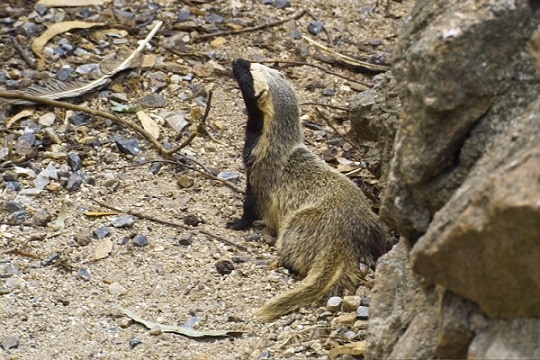
The central grison is a 30-50cm mammal which looks like a beaver. It inhabits the vast majority of Argentina, and is similar to a mongoose in that it’s fast and darting, and will opportunistically grab food with virtually no fear. It’s also similar in that it assaults snakes, with no regard for venom. In March 2021, it was witnessed hunting a painted lancehead, on a sandy dirt road in Córdoba Province, Argentina.
The snake coiled into its typical defensive posture, as though ready to lunge with a venomous bite instantly. The grison didn’t care, and repeatedly attacked the painted lancehead’s head, orbiting the snake in circular movements. Eventually, the grison landed a direct hit to the left side of the head, leaving the Bothrops disporus with a mortal injury. The scientists approached too far, and spooked the grison, sending it fleeing.
The painted lancehead also fled into the bushes, and its ultimate fate was unknown, but it was so mortally injured that death seemed inevitable. This was the first ever official observation of grison/lancehead warfare, but the two species have almost certainly been battling for tens of thousands of years.
| 10 | The second most southerly viper |
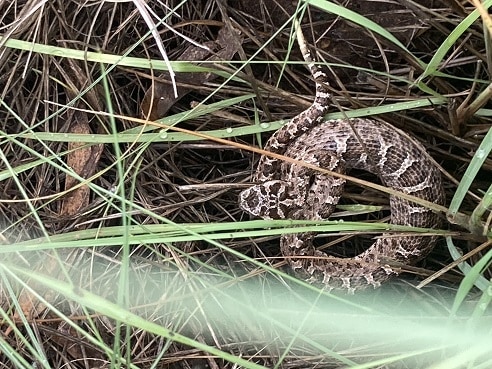
Though there’s no detailed research, the painted lancehead obviously has superior cold weather resistance at a physiological level. However, they can’t resist forever, as the Antarctic air filtering northwards overwhelms the heat mass at the equator.
For example, two cities in Argentina are Buenos Aires and Puerto Madryn. Both are along the Atlantic coast, with an ocean influence, yet the latter is 800 miles further south. Puerto Madryn has an average July temperature of 6.8C compared to 10.5C in Buenos Aires. The painted lancehead doesn’t reach this southerly city.
The painted lancehead lives further south than all Bothrops members except one – the Patagonian lancehead (B. ammodytoides). This is possibly the most southerly snake in the world (the Guinness book of world records believes so), reaching a latitude of 47° S. This species has noticeably different patterns to the painted lancehead, and also reaches nearly 3000 metres in altitude, in rugged highlands.
